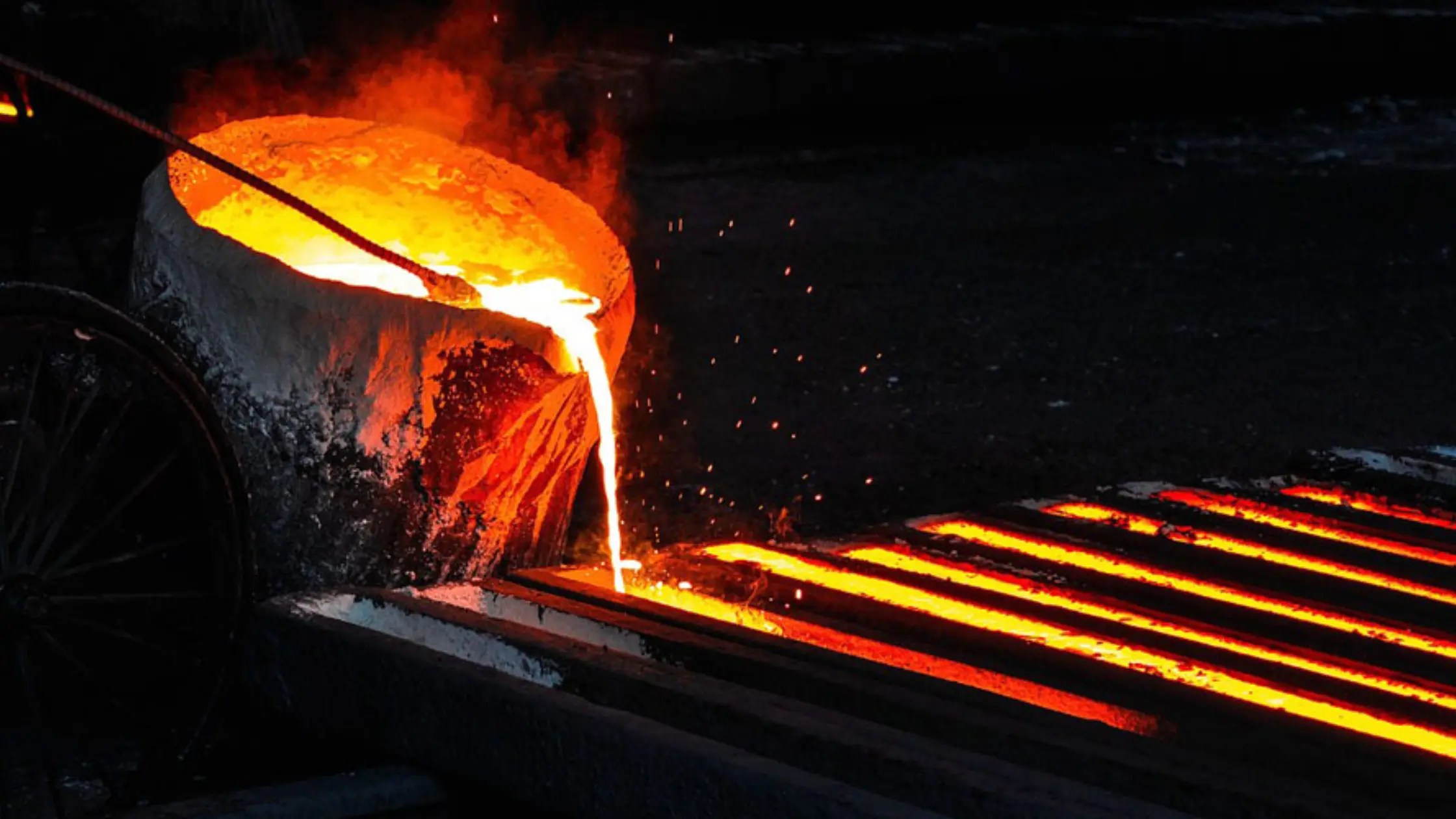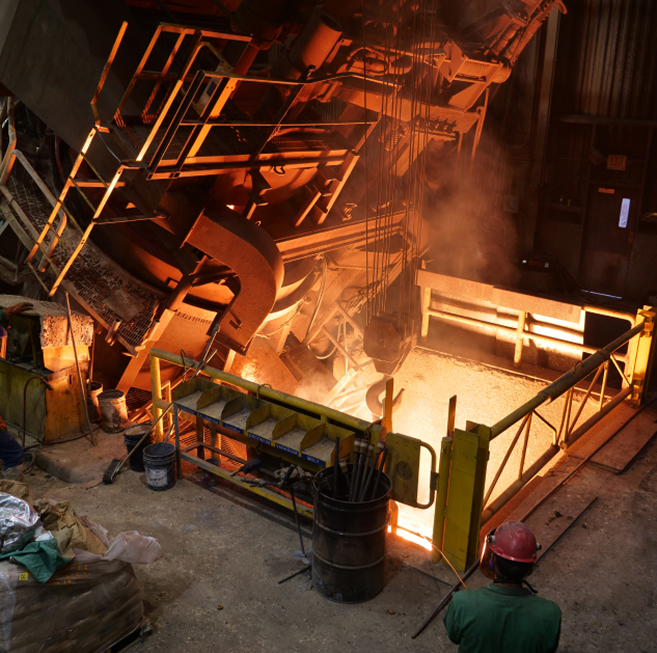Typical Metal Casting Defects and Ways to Fix Them
Wiki Article
Exploring the Art of Metal Casting: Methods and Applications in Modern Foundries
Metal casting is a time-honored craft that incorporates virtuosity with design accuracy. From old methods to modern innovations, this procedure has actually developed considerably. Numerous techniques, such as sand casting and lost-wax casting, showcase the versatility of the tool. At the same time, innovations like 3D printing are reshaping how shops run. As the lines between capability and virtuosity blur, one should take into consideration exactly how these growths impact both conventional methods and modern applications. What lies ahead in this progressing landscape?The Principles of Metal Casting
Metal casting, a critical procedure in manufacturing, includes putting molten metal right into a mold to accomplish a wanted form. This technique functions as a foundation in the manufacturing of complicated metal elements throughout numerous markets. Crucial element of metal casting consist of the choice of products, which can vary from aluminum to steel, each selected for its details residential properties and application viability. The process begins with mold and mildew production, which can be made from sand, steel, or porcelains, relying on the casting approach utilized. The liquified metal is then very carefully put into the mold, where it strengthens and cools. Critical elements such as temperature level control, cooling down price, and mold and mildew design significantly affect the end product's quality and qualities. In enhancement, recognizing the physical and chemical buildings of the steel help in optimizing casting performance, inevitably enhancing the efficiency of the production process and making certain top quality outcome tailored to particular needs.Traditional Casting Strategies
Traditional casting methods include a range of methods that have actually stood the examination of time, demonstrating their effectiveness in generating elaborate steel parts. One prominent method is sand casting, which employs a mix of sand and a bonding representative to produce mold and mildews. The flexibility of sand casting allows for the manufacturing of varied shapes, making it appropriate for both small-scale and large-scale production. One more notable strategy is financial investment casting, often made use of for complicated and accurate geometries. This approach includes developing a wax pattern that is coated in a ceramic shell, which is then heated up to get rid of the wax, leaving a cavity for molten steel. Furthermore, pass away casting is utilized for high-volume manufacturing, where molten metal is injected into recyclable metal molds. Each of these conventional strategies continues to be appropriate, showcasing the workmanship and skill intrinsic in the art of steel casting, while fulfilling the demands of numerous sectors.Modern Innovations in Metal Casting
As markets advance, advancements in metal casting are reshaping production procedures and boosting efficiency. Advanced modern technologies such as 3D printing and computer-aided style (CAD) are reinventing mold and mildew creation, permitting detailed designs that were formerly unattainable. These methods assist in quick prototyping, reducing lead times and cultivating creative thinking in product growth.Additionally, the combination of automation and robotics in foundries is enhancing procedures, minimizing human mistake, and increasing safety and security. Smart sensors and real-time monitoring systems allow accurate control of temperature level and product buildings, making sure better results.
Sustainable practices are arising, with the use of energy-efficient heaters and recycled products, minimizing ecological effect. The fostering of innovative alloys and composite materials is additionally expanding the possibilities of steel casting, causing more powerful and lighter elements. Overall, these modern-day advancements are changing steel casting into a more reliable, specific, and eco responsible sector.
Applications Throughout Various Industries

While diverse markets significantly rely upon metal casting, the method's flexibility plays an important function in meeting certain application needs. In the automotive industry, steel casting is crucial for creating engine elements, transmission real estates, and other complex components that need precision and resilience. The aerospace market benefits from light-weight casted components, making certain both performance and gas efficiency. Additionally, the construction industry utilizes steel casting for architectural components, such as beams and supports, improving the honesty of bridges and structures.
The energy field utilizes steel casting for generator blades and various other significant equipment that have to withstand extreme problems. Medical gadgets likewise see applications of steel casting, especially in surgical tools and prosthetics, where accuracy is critical - Metal Casting. In general, the versatility and reliability of metal casting make it crucial throughout numerous areas, adding to the innovation of technology and framework in modern-day culture
The Artistic Side of Metal Casting
Commonly connected with industrial applications, steel casting also finds its area in the domain of art, where competent craftsmens change molten steel into intricate layouts and expressive sculptures. This artistic side of steel casting encompasses diverse strategies, consisting of sand casting, lost-wax casting, and financial investment casting, each offering distinct possibilities for creative thinking. Musicians make use of these methods to produce works that vary from abstract kinds to realistic representations, permitting personal expression and discourse on contemporary problems.
Regularly Asked Inquiries
What Precaution Are Vital in a Metal Casting Foundry?
Necessary precaution in a steel casting foundry include individual safety tools, appropriate air flow, emergency situation methods, training in taking care of molten steels, normal devices maintenance, and clear communication of risks to ensure worker safety and security and health and wellness. Metal Foundry.Exactly How Do Environmental Laws Influence Metal Casting Processes?
Ecological laws considerably affect metal casting procedures by mandating making use of cleaner technologies, lowering emissions, and advertising waste management techniques. Compliance commonly calls for financial investments in tools, training, and alterations to existing treatments to decrease ecological effect.What Are the Typical Problems in Metal Spreadings?
Usual flaws in metal castings consist of porosity, contraction, additions, and misruns. These concerns can occur from improper mold and mildew design, poor temperature control, or contamination, eventually affecting the structural honesty and total top quality of the end product.Just How Is Waste Managed During Metal Casting Production?
Waste monitoring in metal casting production includes reusing scrap steel, implementing reliable material use, and making use of sophisticated technologies to decrease waste. Shops take on techniques like sand recovery and correct disposal approaches to decrease ecological influence.What Job Opportunities Exist in the Metal Casting Market?
The metal casting sector provides diverse profession opportunities, consisting of functions such as foundry supervisor, metallurgical engineer, quality assurance examiner, pattern manufacturer, and manufacturing supervisor, satisfying different capability and experience in making procedures.Metal casting, an essential procedure in manufacturing, involves pouring molten steel right into a mold to accomplish a preferred form. Additionally, find here die casting is made use of for high-volume manufacturing, where liquified metal is injected into recyclable metal mold and mildews. While diverse sectors progressively depend on metal casting, the technique's flexibility plays an essential duty in meeting details application demands. Typically linked with industrial applications, steel casting also discovers its area in the domain name of art, where skilled artisans change molten metal right into elaborate layouts and meaningful sculptures. Waste monitoring in metal casting production involves recycling scrap metal, carrying out reliable read this article product use, and utilizing innovative technologies to lessen waste.
Report this wiki page